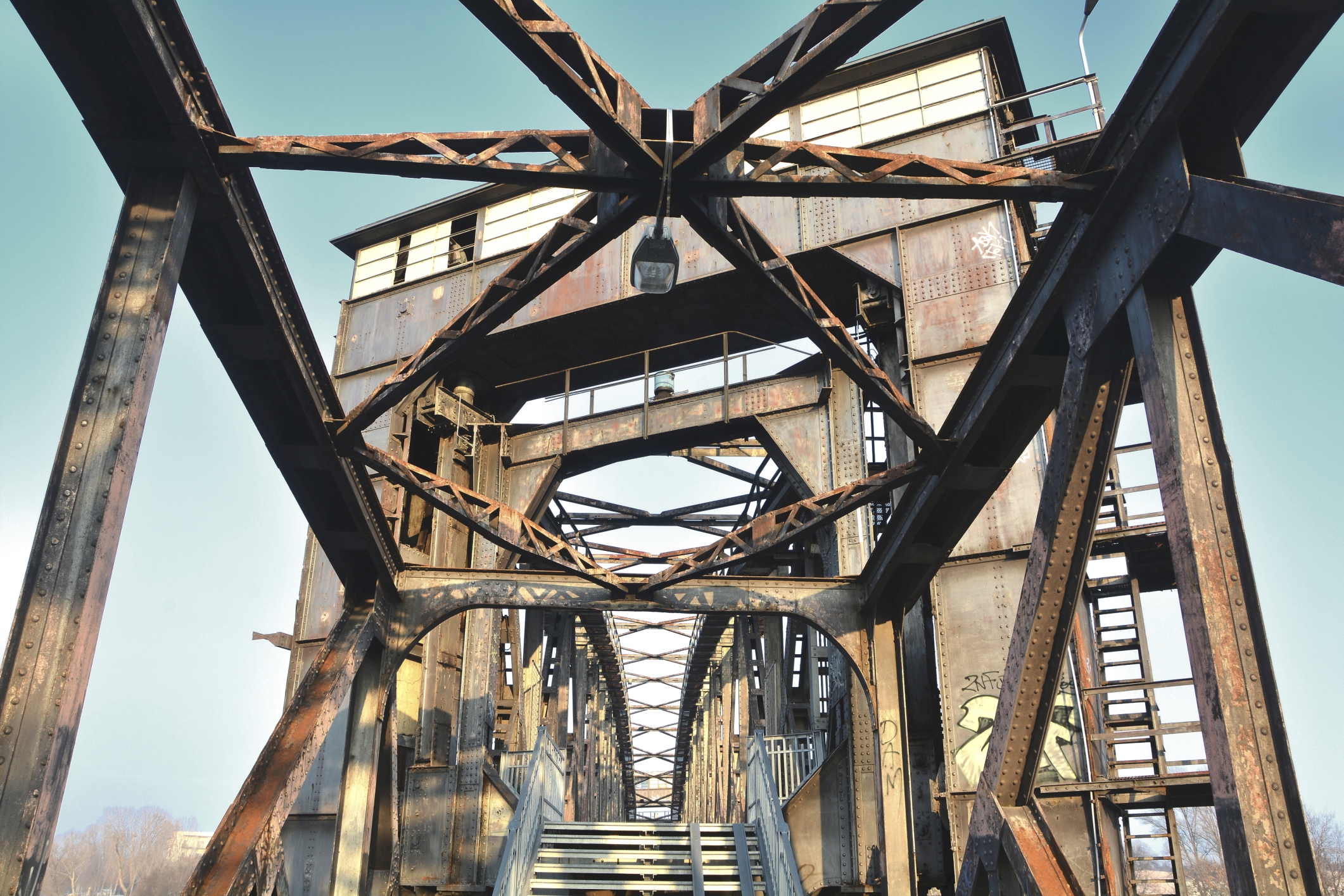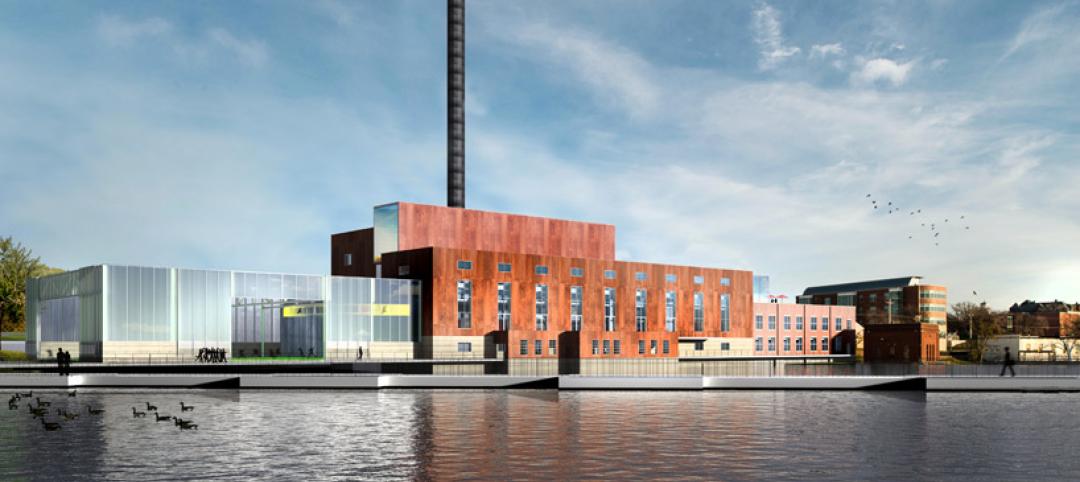At the National Press Club, a new report was released that outlines innovative new ways that the federal government, industry, and other stakeholders can work together to solve the crisis of the failing state of U.S. infrastructure.
Entitled "Making The Grade," the report is the result of experts from 45 different organizations, including corporations, professional organizations, think tanks, financial advisors, and academic institutions. It offers a six-point plan with fresh ideas to regain America's infrastructure leadership and revive the country’s global competitiveness.
The report's name is intended as a rallying cry in response to last year's quadrennial report card by the American Society of Civil Engineers (ASCE), which gave America's overall infrastructure a D+ grade. The ASCE estimates that US$3.6 trillion must be invested by 2020 to make critically needed upgrades and expansions of national infrastructure - and avoid trillions of dollars in lost business sales, exports, disposable income and GDP.
While much has been written and discussed about the problem, Making the Grade provides substantive recommendations and workable solutions to help meet today’s and tomorrow’s infrastructure needs.
The report's six-point recommendations include:
-
Making infrastructure a cabinet-level priority
-
Forming U.S. infrastructure regions
-
Establishing a national infrastructure bank
-
Selling "opportunity" bonds
-
Creating a national infrastructure index
-
Engaging the American people to build support for the importance of infrastructure policy
Collectively, these recommendations apply modern tools, technologies, approaches and fresh thinking to offer a new vision and path forward for the way U.S. infrastructure should be planned, financed, designed and built.
For the full report, please visit: http://autode.sk/MakingTheGrade
Commentary from Making The Grade Supporters
-
"Rebuilding America’s infrastructure should be our top economic priority: it’s essential to our national competitiveness, will help our businesses grow, and will create millions of much-needed middle class jobs. We absolutely cannot lose our global edge on infrastructure and the current trends are not headed in the right direction. As the Making the Grade report – composed by experts – makes clear, there are serious economic costs associated with our infrastructure gridlock. This is a domestic emergency. The good news is that there is strong bipartisan support for funding and financing infrastructure investment, provided we do it in a fiscally-responsible way. My bill, the Partnership to Build America Act, marries long-term goals from both parties: expanded infrastructure investment, tax reform, and more public-private partnerships. I’m proud to have my legislation highlighted in the report and I thank CG/LA and the other partners for raising awareness on this most vital issue.” -- John Delaney, Congressman, 6th District (D-Maryland)
-
"Rarely have I read a document in which the words more powerfully complement the purpose - this is a true blueprint for the work that will lead our country forward, creating real value now and for the next generation - by 'regaining' and 'sustaining' public infrastructure leadership." -- Norman Anderson, President and CEO, CG/LA Infrastructure
-
"Our infrastructure has fallen behind the rest of the world, threatening our economic vitality and even becoming a danger to our citizens. We can't rely on the same-old way of doing things. We need to bring a renewed spirit of innovation and purpose to this challenge. We believe the Making The Grade report provides the right framework, fresh ideas and infusion of energy needed to jumpstart this discussion and create action as a unified industry. We look forward to working closely between the private and public sector to start implementing our recommendations with all due haste." -- Terry D. Bennett, LS LPF MRICS ENV SP LEEDAP, Senior Industry Strategist for Infrastructure, Autodesk
-
“We not only must do better at building what we need, we need to do better in deciding what we need. The Making the Grade Report shows us a way forward in doing just that. This is not and cannot be just about us, about this generation and our needs. It must be about future generations and their options as well.” -- Bill Bertera, Executive Director, Institute for Sustainable Infrastructure
-
“We can’t solve today’s challenges, let alone tomorrow’s, with yesterday’s thinking. It’s well documented that our critical human infrastructure receives failing grades today and needs attention. Through a combination of new and integrated project delivery models and technical and financing innovation we have the ability to address the significant challenges we face. It will take true collaboration among government, industry, the private sector and the public, but investments in infrastructure will lead to strong returns. This work has been started with the Making the Grade report, and it must continue.” -- Ralph Eberts, Executive Vice President, Managing Director of Water, Americas, Black & Veatch
-
"The Making the Grade Report represents the forward looking thinking of nearly 50 companies and organizations. The six-point plan to support rebuilding America's infrastructure provides the necessary direction forward, showing the country how we can dramatically increase our investment through the kind of private and public initiatives that benefit all stakeholders." -- Andrés Gluski, President and CEO, AES Corporation
-
"Innovation in infrastructure requires long term effort and attention to the capabilities that must be developed among a coalition of stakeholders to achieve that goal. US infrastructure in particular is a 'wicked problem' - complex and open-ended - that requires a guiding framework and a high level of collaboration and originality for its resolution.” -- John Kao, fmr Harvard Business School Professor and Chairman, Institute for Large Scale Innovation
-
“21st century success depends on 21st century infrastructure. Making the Grade outlines a thoughtful, balanced and timely program for addressing this critical need.” -- Dr. James A. Moore, SVP/Director National Community Planning & Urban Design, HDR
-
“Infrastructure systems are the backbone of our economy and a critical part of our daily lives. While it’s tempting to assume that we should just address the largest funding gap first, it’s important to remember that all of our infrastructure is linked and each sector has a significant role to play. We need leadership from federal, state and local levels of government who will communicate the urgency of revitalizing our nation’s infrastructure, craft innovative solutions and make the investments the system needs so that the United States is competitive on a global level. Industry efforts like the Making the Grade Symposium and its report help head us in this direction.” -- Patrick Natale, P.E., F.ASCE, FASAE, CAE, Exec Director of American Society of Civil Engineers
Related Stories
| Nov 7, 2014
World's best new skyscraper: Sydney's vegetated One Central Park honored by CTBUH
The Jean Nouvel-designed tower tops the list of 88 entries in the 13th annual Council on Tall Buildings and Urban Habitat Awards.
| Nov 7, 2014
NORD Architects releases renderings for Marine Education Center in Sweden
The education center will be set in a landscape that includes small ponds and plantings intended to mimic an assortment of marine ecologies and create “an engaging learning landscape” for visitors to experience nature hands-on.
Sponsored | | Nov 6, 2014
To build your strongest team, don't hire clones
To attract and keep talented individuals who are different than you, Entrepreneur magazine suggests a few foundational principles. SPONSORED CONTENT
| Nov 6, 2014
Hines planning tall wood office building in Minneapolis
The Houston-based developer is planning a seven-story wood-framed office building in Minneapolis’ North Loop that will respect the neighborhood’s historic warehouse district look.
| Nov 6, 2014
Studio Gang Architects will convert power plant into college recreation center
The century-old power plant will be converted into a recreation facility with a coffee shop, lounges, club rooms, a conference center, lecture hall, and theater, according to designboom.
Sponsored | | Nov 6, 2014
Drilling deeper: On the ground insights from the Marcellus Shale region
The Marcellus Shale region is expansive, stretching from upstate New York through Pennsylvania to West Virginia. It’s an exciting time to live and work in the area. SPONSORED CONTENT
| Nov 5, 2014
AEC firms leverage custom scripts to bridge the ‘BIM language gap'
Without a common language linking BIM/VDC software platforms, firms seek out interoperability solutions to assist with the data transfer between design tools.
| Nov 5, 2014
Survey: More than 75% of workload takes place without face-to-face interactions
With the rise of technology, much of the workday—even the most productive morning hours—is spent corresponding via email or conference call, according to a recent survey of corporate workers by Mancini•Duffy.
| Nov 5, 2014
The architects behind George Lucas' planned Chicago museum unveil 'futuristic pyramid'
Preliminary designs for the $300 million George Lucas Museum of Narrative Art have been unveiled, and it looks like a futuristic, curvy pyramid.
Sponsored | | Nov 5, 2014
How to maximize affordability and sustainability through all-wood podiums
Wood podium construction takes an age-old material and moves it into the 21st century.

















